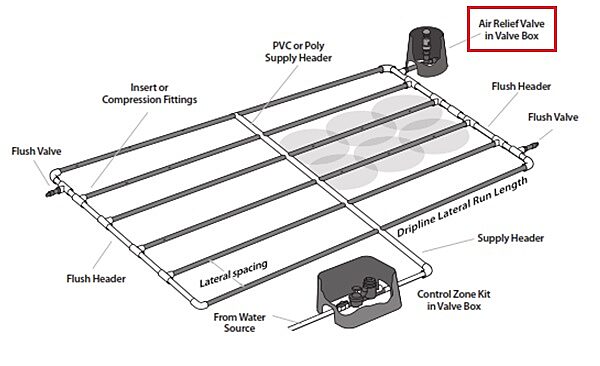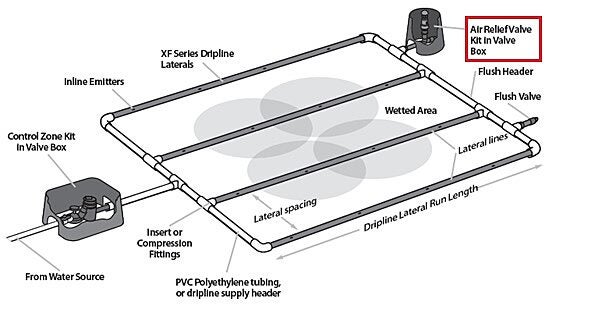Drip Tip – Use Air Relief Valves for Better Drip System Performance
The use of air relief valves for dripline applications is essential to keep the entire system running efficiently and minimize maintenance costs for your customer.
Air Relief Valves – What’s the Benefit?
First, at the start of the watering cycle the air relief valve releases air from the zone eliminating air pockets. This action speeds up the fill time and increases watering uniformity across the zone. Secondly, air relief valves in subsurface dripline installations allow air into the zone at the end of the watering cycle which ensures that a low-head drainage vacuum (back-siphoning) doesn’t draw debris into the dripline.
Finally, the air relief valve minimizes water hammer at the start of the watering cycle allowing air to release. The effects of water hammer in dripline applications are less destructive than in spray or rotor systems however, water hammer can still cause pipes to wiggle and work their way to the surface.
How Many Air Relief Valves Are Needed?
One air relief valve per irrigation valve may be enough, but in some cases system efficiency can be improved when multiple air relief valves per irrigation valve are utilized. Air relief is needed most at the highest point of the drip system layout. The air relief valve should be placed in an exhaust header or a line that runs perpendicular to the lateral rows at the furthest distance possible from the water source to ensure all rows of the dripline can take advantage of the air relief valve.
Where to use Air Relief Valves?
On-surface installations – An air relief valve is not necessary when XFD or XFCV dripline is installed on-surface under mulch. Each emitter will provide the air relief necessary.
Subsurface installations – Air relief should be installed in XFS subsurface installations at the highest point(s) of the dripline zone.
Center Feed Layout

End Feed Layout

Center Feed Layout

End Feed Layout
